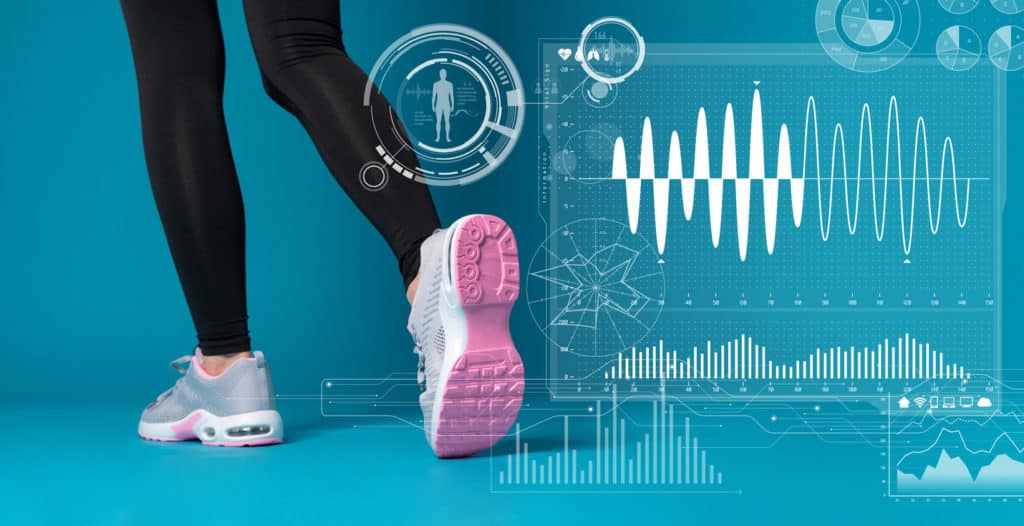- Introduction
- Transforming sports with the cloud computing revolution!
- How is cloud computing used in sports?
- How has cloud computing helped the sports industry?
- What areas in player development have the cloud contributed to?
- Has the cloud also benefited the viewers? How?
- Concluding thoughts
Introduction
Sports, in general, is the art of possibilities. It is an art where physical strength and mental integrity comes into the foreground to prove one’s mettle. It encompasses strength, speed, skill, endurance, and awe-inspiring triumphs. But where is the sports experience standing in 2021? Let’s find out!

Transforming sports with the cloud computing revolution!
Cloud computing is transforming the way sports and games are played & viewed. From monitoring the real-time parameters of athletes to utilizing data to improve the team’s performance, cloud computing has been changing the entire landscape of sports. To be precise, cloud computing is revolutionizing the sports industry.
How is cloud computing used in sports?
Data related to athlete’s eating, sleeping, and training is obtained in the cloud servers using biomedical sensors. This data is then used by the various team members to deduce methods to improve their overall health, forecast impending injury, and help them achieve optimum performance. Various sports organizations and clubs have been using cloud computing technology on and off the field, making it possible to analyze massive amounts of data in a single platform to make suitable decisions and changes.

Viewers are also benefited from this technology as they get all the details and parameters that enhance the viewing experience.
How has cloud computing helped the sports industry?
We have witnessed several teams and organizations seeking the help of cloud technology to improve their athletes’ performance. Below are some of the examples where cloud computing has helped the teams.
1. Sail GP Championship Series
The teams participating in the championship series used a leading organization’s cloud infrastructure that can effectively analyze 80 billion data requests. The data obtained is then transmitted to the mains server in London, which is then transmitted to the broadcasters and team headquarters, within the span of 2/10th of a second. The information transmitted helps teams to decide optimal race strategies and gives fans more insights and a better viewership experience.
2. Lifting the lockdown curse: Cheltenham Festival
Horse racing betting is one of the most enjoyed events in the UK. Due to the restrictions imposed by the pandemic, fans were not able to watch the race in real-time in order to place their bets. Thanks to the power of the cloud, around 4,78,000 concurrent viewers were able to watch and place real-time bets during the 4-day Cheltenham Festival.
3. USA’s cycling team
Every millisecond is vital in an athlete’s track journey. With the help of a leading organization, the USA cycling team developed an application that would help the team pull up accurate and precise real-time rider data to understand and make on-spot adjustments and give maximum performance output during the training sessions.
After every training session, the data is collected and shared across servers. Then, plans are devised to bring about improvements in the track performance of the athlete.
4. Personal health and milestones for marathon runners
Another application that is used by around 50 million users is the Runkeeper. The application uses a combination of ambient noise, audio cues, and underfoot feedback, which is synced via the cloud to allow users to run without a trainer or guide.

The application was poised to help runners track their speed, mileage, and time to effectively plan their breaks and run speed at different intervals and intensities.
The above are just a couple of examples where cloud computing is used in sports. The technology of using real-time data for performance upgrades is used across all track and field events.
What areas in player development have the cloud contributed to?
1. Monitoring player’s well-being and health
The biomedical sensors have made it possible to transfer real-time data via the cloud during practice sessions making it easier for performance analysts, coaches, and managers to monitor the vital health of players in real-time.
2. Player’s performance monitoring
The performance data obtained from the devices is uploaded to the cloud so that everybody from the head coach to the medical team can view the data and analyze it. It helps track a player’s performance and identify the areas where his/her activity needs improvement.
3. Medical intervention and rehab
The earlier the injuries are identified, the faster the recovery. The data retrieved from biomedical sensors transmitted across the cloud helps the medical team check impending injuries and suggest remedial measures for quick recovery methods.
The above are just a few aspects in an athlete’s life where cloud computing has played the role of a savior. Quite a few technologies are running on a trial basis and are expected to roll out in the forthcoming months.
Has the cloud also benefited the viewers? How?
Not only has cloud technology sprayed its magic across teams and their players, but it has also transformed the viewing experience of fans. The viewers are treated with a user experience and interface that displays various aspects of on-field attributes.
Attributes related to speed, velocity, polls, win/lose probability, positions, etc., are available for the viewers. The cloud also provides predictive analysis, real-time video streams, and high-performance computing. This act of cloud computing is making the viewer’s experience more engaging and entertaining.
Concluding thoughts
Cloud technology has brought significant improvements in the sports industry and is expected to bring on further changes too. It has made the life of players, viewers, and team members more exciting and productive.
With a forecasted Compound Annual Growth Rate (CAGR) of 19.1%, a career in cloud computing can be rewarding. If you have any plans to upskill in this domain, then do check the PG in Cloud Computing curriculum. Dive into the program page to know more about the course. Do keep visiting our blog page for more technology blogs and related information.








